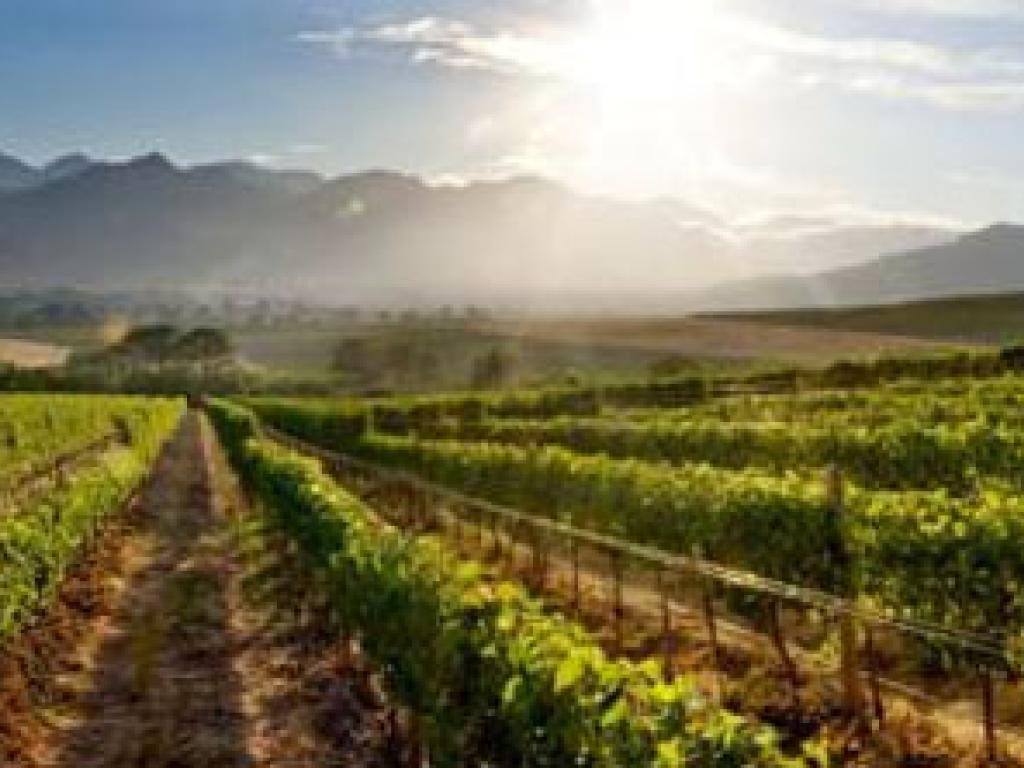Viticulture and Climate change: what can we expect?

By Bastien Dieppois
The grapevine is one the oldest cultivated plants that, along with the process of making wine, has resulted in a rich geographical and cultural history of development. Today’s viticultural regions for quality wine production are located in relatively narrow geographical – and therefore climatic – niches, putting them at greater risk from both short-term climate variability and long-term climate change than other more ‘broad acre’ crops.
In general, the overall style of wine that a region produces is a result of the baseline climate, while climate variability determines vintage quality differences. Climatic changes, which influence both variability and average conditions, therefore have the potential to bring about changes in wine styles. Our understanding of climate change and the potential impacts on viticulture and wine production has become increasingly important as changing levels of greenhouse gases and alterations in Earth Surface characteristics bring about perturbations in the Earth’s radiation budget, atmospheric circulation, and hydrological cycle. Temperature and moisture regimes are among the primary elements of terroir (Vaudour, 2002; White et al., 2009), with growing season temperature being particularly important in delimiting regions suitable for growing wine grapes (Jones et al., 2005).

Figure 1. Global change in viticulture suitability RCP 8.5 (Hannah et al., 2013). Change in viticulture suitability is show between current (1961-2000) and 2050 (2041-2060) time periods, showing agreement among a 17-GCM ensemble. Areas with current suitability that decreases by midcentury are indicated in red (>50% GCM agreement). Areas with current suitability that is retained are indicated in light green (>50% GCM agreement) and dark green (>90% GCM agreement); whereas areas not suitable in the current time period but suitable in the future are shown in light blue (>50% GCM agreement) and dark blue (>90% GCM agreement).
Here, we present the findings of Hannah et al. (2013) who constructed an impact model from the area of agreement of three independent modelling methods – a temperature-varietal model, a heat summation phenology model, and a multifactor distribution model – that reflect a range of wine suitability. Major global geographic shifts in suitability for viticulture are projected by the consensus of their wine grape suitability models (Fig. 1), between current (mean of 1961–2000) and 2050 (mean of 2041–2060), with high agreement among the results obtained with 17 Global Climate Models (GCMs). Suitability is projected to decline in many traditional wine-producing regions (e.g. the Bordeaux and Rhône valley regions in France, and Tuscany in Italy), and increase in more northern regions in North America and Europe under the RCP 8.5 scenario. In South Africa, half of wine grape suitability is expected to decline, while the rest should be retained.
These conclusions, however, are subject to important spatial and temporal refinements. Local soil composition and topography will strongly influence the local manifestation of the global patterns. Calculating impacts on viticultural suitability by using daily extreme temperatures also may yield different results than the 20-year mean monthly climatology used here. Daily and minimum and maximum temperatures can indeed be used to establish daily degree-days maps in calculating some phenological indices such as the Winkler index, the heliothermal index or the heat Summation at blooming, veraison and maturity (Bois et al., 2008).
References
Bois B, van Leeuwen C, Pieri P, Gaudillère J-P, Saur E, Joly D, Wald L, Grimal D (2008) Viticultural agroclimatic cartography and zoning at mesocale level using terrain information, remotely sensed data and weather station measurements. Case study of Bordeaux winegrowing area. VIIth International terroire Congress, Changins, Switzerland.
Hannah L, Roehrdanz PR, Ikegami M, Shepard AV, Shaw MR, Tabor G, Zhi L, Marquer PA and Hijmans RJ (2013) Climate change, wine, and conservation. Proceedings of the National Academy of Sciences of the United States of America 110(17):6907–6812.
Jones GV, White MA, Cooper OR, Storchmann K (2005) Climate change and global wine quality. Clim Change 73(3):319–343.
Vaudour E (2002) The quality of grapes and wine in relaton to geography: Notions of terroir at various scales. J Wine Res 13:117–141.
White MA, Whalen P, Jones GV (2009) Land and wine. Nat Geosci 2:82–84.
Image: http://showme.co.za/tourism/franschhoek-food-and-wine-route-cape-winelands/